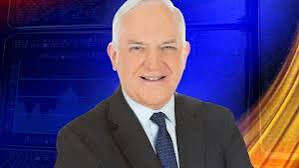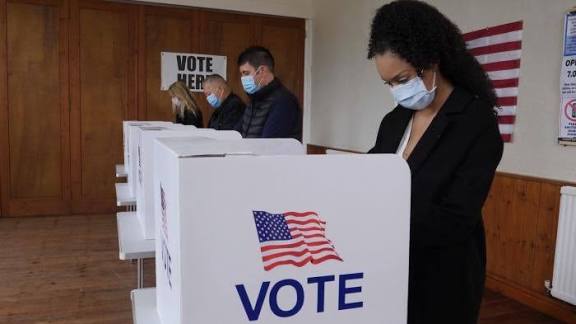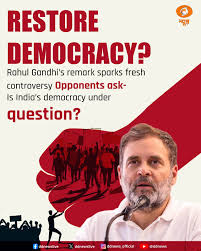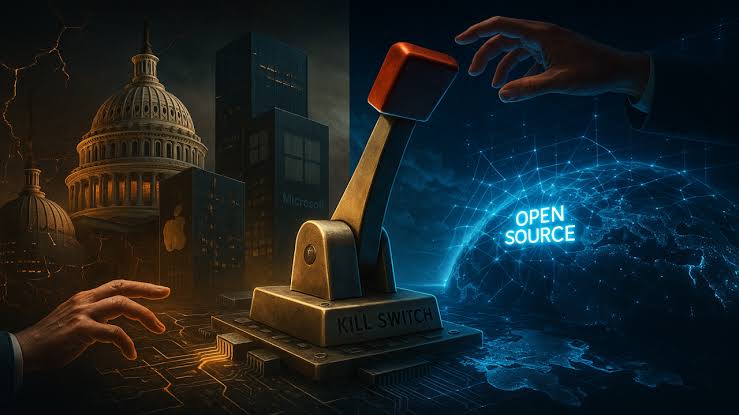Journal Editorial Report: Wall Street Report podcast,Report youtube,ingraham angle august 28th 2025

Panel discussions with the publication’s writers and editors revolve around the political, economic and cultural issues people are talking about that week. Today we will discuss about Journal Editorial Report: Wall Street Report podcast,Report youtube,ingraham angle august 28th 2025
Journal Editorial Report: Wall Street Report podcast,Report youtube,ingraham angle august 28th 2025
In the ever-evolving landscape of American political and financial discourse, three prominent media forces stand out in August 2025 — The Journal Editorial Report, the expanding influence of Wall Street–focused podcasts and YouTube commentary, and the populist perspective of The Ingraham Angle.
Each platform reflects a different layer of American thought: the institutional, the analytical, and the emotional. Together, they reveal how the conversation about markets, politics, and culture has become both more fragmented and more interconnected. This editorial analysis explores their approaches, contrasts their tones, and highlights the broader implications of their narratives.
1. The Editorial Core: The Journal Editorial Report

1.1 Function and Reputation
The Journal Editorial Report is one of the flagship opinion programs of The Wall Street Journal. Moderated by senior editorial figures, it features weekly discussions among editors and invited guests who examine political, economic, and social developments shaping national debate.
The show is known for its measured tone and depth. Unlike the rapid-fire commentary common in other outlets, it provides a forum for reflective discussion grounded in facts and traditional market principles. It is part of the WSJ’s broader identity — a voice that values fiscal conservatism, limited government intervention, and global competitiveness.
1.2 Editorial Posture: Continuity and Evolution
Over time, the Journal’s editorial position has evolved to address new realities. While it remains aligned with classical liberal economics, it now navigates a world where financial markets are influenced by geopolitics, technology, and populist movements.
In 2025, the Journal’s editorial team faces a delicate balance: maintaining its credibility as an institution while responding to an era defined by speed, social media commentary, and public distrust of elites.
Today, The Journal Editorial Report functions not only as a defender of traditional capitalism but as a mediator in a noisy media ecosystem — translating complex global trends into digestible insight while keeping its identity as a “voice of reason” amid extremes.
2. Wall Street Podcasts and YouTube Reports
2.1 The Rise of Podcast Authority
Over the last decade, the growth of financial podcasts has transformed how Americans consume market information. Audio commentary offers immediacy, flexibility, and personality — all traits that align with modern attention spans.
Listeners today expect instant interpretations of Fed meetings, tech earnings, and job reports. Podcasts deliver that in real time. Their hosts often blend journalistic analysis with personal insight, forming intimate connections with audiences.
This has created a new form of trust — not institutional, but relational. The host’s voice becomes a brand, and their tone becomes a form of expertise. For many, podcasts are replacing traditional columns as the go-to source of daily economic intelligence.
2.2 YouTube and Visual Commentary
While podcasts dominate the audio space, YouTube has emerged as the visual equivalent. Financial journalists and independent creators use the platform to simplify data through visuals, graphs, and storytelling.
This shift has democratized financial education. Investors and ordinary citizens can now access market explanations that were once locked behind paywalls or professional jargon. However, accessibility also brings volatility — as algorithms reward sensationalism and speed over accuracy.
YouTube creators often compete to break stories first or predict trends boldly. This leads to a trade-off: information travels faster, but its reliability sometimes suffers.
2.3 The Balance Between Depth and Velocity
The challenge for modern financial commentary is balancing depth with speed. Traditional institutions like The Wall Street Journal value accuracy, while digital creators thrive on immediacy.
This tension defines 2025’s media environment. Many journalists are rethinking their workflows — blending the old-world rigor of editorial standards with the fast rhythm of digital communication.
Ultimately, the goal remains the same: to explain complex realities. Yet the methods — institutional versus personal, written versus conversational — now vary dramatically across platforms.
3. The Ingraham Angle (August 28, 2025): A Populist Voice
3.1 Key Themes and Messaging
On August 28, 2025, The Ingraham Angle offered a vivid display of populist television journalism. The episode began with an emotional focus — covering a school tragedy and turning quickly toward themes of moral decline, cultural confusion, and government failure.
Laura Ingraham’s style remains unmistakable: sharp, emotional, and framed around personal responsibility and moral urgency. She portrays America’s crises not merely as policy failures but as evidence of cultural and moral decay.
Later in the episode, she touched on technological overreach, privacy issues, and the daily struggles of ordinary Americans facing economic pressure. Her coverage reflected the populist method — connecting disparate events through a moral framework that appeals to emotion as much as to logic.
3.2 Media Strategy and Influence
Ingraham’s approach illustrates the enduring power of emotional storytelling in American media. She crafts narratives of heroes, victims, and villains, using language that calls for action and accountability.
This directness contrasts sharply with the analytical tone of The Journal Editorial Report. Where the Journal seeks understanding, Ingraham demands judgment.
Yet both formats are powerful. Ingraham connects with viewers who feel excluded from elite conversations. Her moral framing simplifies complexity — sometimes at the cost of nuance, but always with clarity of conviction.
The result is a kind of ideological echo that reverberates through the broader media ecosystem. Topics that gain traction on The Ingraham Angle often appear later in editorials, podcasts, or policy discussions — proving that emotional narratives can set the stage for institutional analysis.
4. Comparative Analysis: Three Voices, One Landscape
To understand how these platforms coexist and influence each other, it helps to compare their tones, methods, and audiences.
| Aspect | The Journal Editorial Report | Wall Street Podcasts / YouTube | The Ingraham Angle (Aug 28, 2025) |
|---|---|---|---|
| Tone | Analytical, calm, evidence-based | Conversational, data-driven, fast | Emotional, combative, moralistic |
| Focus | Policy and market interpretation | Market updates, forecasts, interviews | Cultural critique, populist themes |
| Audience | Policy professionals, investors | Traders, entrepreneurs, information-seekers | Populist viewers, social conservatives |
| Pacing | Weekly reflection | Hourly or daily episodes | Nightly broadcast |
| Goal | Clarify and explain | Inform and engage | Persuade and mobilize |
Each has a distinct role in shaping public understanding.
The Journal Editorial Report gives structure and legitimacy to discussions about markets and governance.
Wall Street podcasts and YouTube creators translate technical concepts into everyday language.
The Ingraham Angle channels emotional energy into a populist critique of elite failure.
Together, they create a feedback loop — institutional ideas flow outward, public emotions flow back in, and both sides adjust their framing accordingly.
5. August 2025: Central Themes Across Media
5.1 The AI Investment Boom and Market Risk
The financial world in August 2025 is dominated by talk of the “AI boom.” Investors are divided between optimism and concern — is this technological revolution sustainable, or another speculative bubble?
Podcasts and YouTube analysts dive deep into charts and forecasts. The Journal Editorial Report frames the issue through a policy lens, warning of overvaluation and calling for regulatory balance.
Meanwhile, populist commentators like Ingraham interpret the AI craze as a symptom of elite detachment — a market run by insiders while working families face rising costs.
This three-way discussion reveals the media’s segmentation: one focuses on fundamentals, another on trends, and the third on moral consequence.
5.2 Inflation, Wages, and Consumer Sentiment
As inflation continues to pinch household budgets, all three media types engage the topic differently.
The Journal emphasizes macroeconomic context — fiscal policy, energy costs, and supply chains.
Podcasts provide on-the-ground takes: wage data, job trends, and real-time reactions to Fed decisions.
Ingraham emphasizes the human story: fixed-income retirees, middle-class frustration, and political betrayal.
Despite differences in tone, they converge on a shared reality — economic unease remains central to American life in 2025.
5.3 Public Trust and Institutional Credibility
Another recurring theme is the erosion of institutional trust. Data revisions, political scandals, and regulatory controversies have led audiences to question official narratives.
Financial podcasts often debate whether market data can still be trusted. The Journal defends the importance of transparent methodology and statistical integrity. Ingraham frames the issue as a moral indictment of technocratic elites.
This tension — between trust and skepticism — defines the 2025 media environment. It is both a challenge and an opportunity: institutions must rebuild credibility without losing connection to an emotionally charged public.
6. Responsibilities and Challenges for Modern Media
6.1 Navigating Complexity
Economic and political realities are increasingly complex, but audiences crave clarity. The task for journalists is to simplify without distorting.
The Journal exemplifies the traditional model — disciplined, evidence-based, deliberate. Podcasts and YouTube creators bridge accessibility. Ingraham’s show, while polarizing, taps into emotional intelligence that traditional media sometimes lacks.
The best path forward may involve collaboration: institutions borrowing from digital agility, and digital creators learning from editorial rigor.
6.2 Transparency and Bias
Every platform has biases — institutional, ideological, or commercial. Transparency is crucial. The Journal must openly frame its perspectives; podcasts must disclose affiliations and financial interests; ideological hosts must differentiate between fact and opinion.
Audiences are no longer passive. In the digital age, they cross-check, comment, and challenge. Media credibility now depends not only on expertise but on honesty about one’s lens.
6.3 The Risk of Echo Chambers
One danger of today’s media fragmentation is the formation of echo chambers. Viewers who watch only one type of program hear only one worldview.
To foster informed citizenship, cross-pollination is essential. The Journal’s editorial team could invite contrasting voices. Podcasts could feature ideological diversity. And television hosts could occasionally highlight opposing data rather than dismissing it.
The strength of democracy lies not in agreement but in informed disagreement.
7. The Road Ahead: Late 2025 and Beyond
The closing months of 2025 will test the resilience of media and its audiences. Several issues loom large:
Federal Reserve Policy: Any sudden interest rate decision could redefine narratives around growth, debt, and inequality.
AI Regulation: The debate over technological ethics will intensify, challenging both investors and policymakers.
Election Year Dynamics: As campaigns accelerate, the intersection of politics, money, and media will grow even more pronounced.
Institutional Accountability: Data reliability, government transparency, and media trust will remain key battlegrounds.
Each event will ripple through multiple platforms — the analytical, the digital, and the emotional. The interplay among them will determine how Americans interpret reality itself.
Conclusion
The landscape of 2025’s public conversation is fragmented but dynamic. The Journal Editorial Report continues to represent the institutional backbone of American analysis — cautious, balanced, and steeped in editorial tradition.
Wall Street podcasts and YouTube commentators are the agile disruptors — fast, adaptive, and democratizing access to financial insight.
The Ingraham Angle, meanwhile, embodies the populist countercurrent — passionate, moralistic, and unfiltered in its critique of elites.
Together, these platforms form a triangle of influence. They compete for attention yet depend on one another to sustain relevance.
The Journal gives structure to ideas. Podcasts give speed to interpretation. Ingraham gives emotion to argument.
The American public, meanwhile, navigates among them — seeking not just information but meaning. In that search lies the ongoing evolution of journalism itself: from print to podcast, from editorial to emotional, from institution to individual voice.
The challenge for all — journalists, creators, and citizens alike — is to maintain truth, clarity, and empathy amid the noise. The media of 2025 will succeed not by shouting the loudest, but by listening, explaining, and helping society see the whole picture once more.
How useful was this post?
Click on a star to rate it!
Average rating 0 / 5. Vote count: 0
No votes so far! Be the first to rate this post.
About the Author
usa5911.com
Administrator
Hi, I’m Gurdeep Singh, a professional content writer from India with over 3 years of experience in the field. I specialize in covering U.S. politics, delivering timely and engaging content tailored specifically for an American audience. Along with my dedicated team, we track and report on all the latest political trends, news, and in-depth analysis shaping the United States today. Our goal is to provide clear, factual, and compelling content that keeps readers informed and engaged with the ever-changing political landscape.




